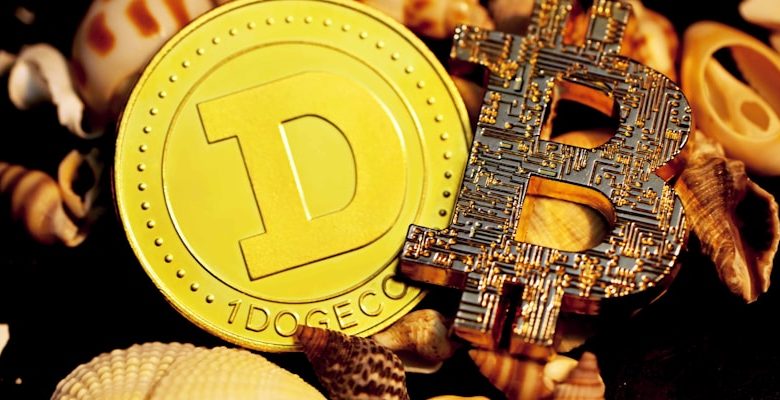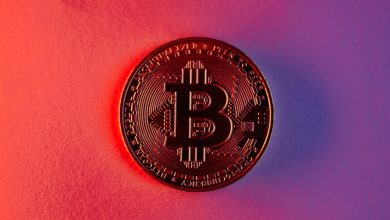DeFi Explained: A Comprehensive Guide to Decentralized Finance

- Understanding the Basics of DeFi
- The Rise of Decentralized Finance
- Exploring DeFi Platforms and Protocols
- Benefits and Risks of Engaging in DeFi
- Key Players in the DeFi Ecosystem
- The Future of Decentralized Finance
Understanding the Basics of DeFi
Decentralized Finance, or DeFi, is a rapidly growing sector in the cryptocurrency industry that aims to revolutionize traditional financial systems by leveraging blockchain technology. Understanding the basics of DeFi is crucial for anyone looking to participate in this innovative space.
At its core, DeFi refers to a set of financial services and applications built on decentralized networks, primarily using smart contracts. These smart contracts are self-executing agreements with the terms of the contract directly written into code. By eliminating the need for intermediaries, such as banks or brokers, DeFi aims to make financial services more accessible, transparent, and efficient.
One of the key features of DeFi is its permissionless nature, allowing anyone with an internet connection to access and use these financial services. This open ecosystem enables users to interact with various DeFi protocols without needing to undergo traditional KYC (Know Your Customer) procedures.
Some of the most common DeFi applications include decentralized exchanges (DEXs), lending platforms, yield farming, and synthetic assets. DEXs allow users to trade cryptocurrencies directly with one another, without the need for a central authority. Lending platforms enable users to borrow or lend digital assets, earning interest in the process.
Yield farming involves providing liquidity to DeFi protocols in exchange for rewards, such as additional tokens. This process helps to bootstrap liquidity in these protocols, making them more efficient and attractive to users. Synthetic assets, on the other hand, are tokenized representations of real-world assets, such as commodities or stocks, allowing users to gain exposure to these assets without actually owning them.
The Rise of Decentralized Finance
Decentralized Finance, also known as DeFi, has been gaining significant momentum in the financial world in recent years. This innovative technology leverages blockchain and smart contracts to provide traditional financial services in a decentralized manner. The rise of DeFi can be attributed to the growing demand for more inclusive, transparent, and efficient financial systems.
One of the key features of DeFi is its ability to eliminate the need for intermediaries such as banks or brokers, allowing users to interact directly with each other on a peer-to-peer basis. This not only reduces costs but also enhances security and privacy, as users have full control over their assets at all times.
Another driving force behind the rise of DeFi is the concept of programmable money, which enables the automation of financial transactions through smart contracts. This automation not only streamlines processes but also minimizes the risk of human error or fraud, making DeFi more efficient and reliable.
Furthermore, the open nature of DeFi allows for greater accessibility and inclusivity, as anyone with an internet connection can participate in the ecosystem. This democratization of finance has the potential to empower individuals who may have been excluded from traditional financial services due to various barriers.
Overall, the rise of DeFi signifies a shift towards a more decentralized, transparent, and efficient financial system that has the potential to revolutionize the way we think about and interact with money. As DeFi continues to evolve and innovate, it is likely to play an increasingly significant role in shaping the future of finance.
Exploring DeFi Platforms and Protocols
When it comes to exploring DeFi platforms and protocols, there are a plethora of options available in the decentralized finance space. These platforms offer various services such as lending, borrowing, trading, and yield farming, allowing users to interact with the DeFi ecosystem in different ways.
One popular type of DeFi platform is decentralized exchanges (DEXs), which allow users to trade cryptocurrencies without the need for a central intermediary. Examples of DEXs include Uniswap, SushiSwap, and Balancer. These platforms use automated market makers (AMMs) to facilitate trading and provide liquidity.
Another common type of DeFi platform is lending protocols like Compound and Aave, which enable users to lend out their cryptocurrencies and earn interest on their holdings. Borrowers can also use these platforms to borrow assets by providing collateral in the form of other cryptocurrencies.
Yield farming platforms like Yearn Finance and Curve Finance offer users the opportunity to earn high returns on their cryptocurrency holdings by providing liquidity to various DeFi protocols. Users can stake their assets in liquidity pools and receive rewards in the form of additional tokens.
Overall, exploring DeFi platforms and protocols can be a rewarding experience for users looking to engage with decentralized finance in a secure and efficient manner. By understanding the different types of platforms available and how they function, users can make informed decisions about where to allocate their assets and participate in the growing DeFi ecosystem.
Benefits and Risks of Engaging in DeFi
Engaging in DeFi can offer numerous benefits, such as greater financial inclusion, increased transparency, and enhanced efficiency. By utilizing decentralized platforms, individuals can access a wide range of financial services without the need for traditional intermediaries. This can lead to lower costs, faster transaction speeds, and more control over one’s assets. Additionally, DeFi allows for greater accessibility to various investment opportunities, enabling users to diversify their portfolios and potentially earn higher returns.
However, it is essential to be aware of the risks associated with DeFi. One of the primary concerns is smart contract vulnerabilities, which can result in the loss of funds if exploited by malicious actors. Moreover, the decentralized nature of DeFi means that there is no central authority to oversee transactions or address issues, increasing the potential for scams and fraud. Additionally, the fast-paced and rapidly evolving nature of the DeFi space can make it challenging for users to keep up with the latest developments and security best practices.
In conclusion, while engaging in DeFi can offer numerous benefits, it is crucial to approach this emerging sector with caution and diligence. By understanding the risks involved and taking appropriate measures to mitigate them, individuals can make the most of the opportunities presented by decentralized finance while safeguarding their assets and investments.
Key Players in the DeFi Ecosystem
Some of the key players in the decentralized finance (DeFi) ecosystem include various projects and platforms that have revolutionized the way financial transactions are conducted. These players have introduced innovative solutions that allow users to access financial services without the need for traditional intermediaries.
One prominent player in the DeFi space is MakerDAO, which offers a decentralized stablecoin called DAI. DAI is pegged to the US Dollar and is created through collateralized debt positions (CDPs) on the Maker platform. This stablecoin provides users with a reliable store of value and a medium of exchange within the DeFi ecosystem.
Another important player in DeFi is Compound Finance, a protocol that allows users to lend and borrow cryptocurrencies in a decentralized manner. By using smart contracts, Compound enables users to earn interest on their crypto holdings or borrow assets against their collateral. This platform has gained popularity for its transparency and efficiency in facilitating peer-to-peer lending.
Uniswap is a decentralized exchange (DEX) that has gained significant traction in the DeFi space. Unlike traditional exchanges, Uniswap operates without order books and instead uses liquidity pools to facilitate token swaps. This automated market maker has become a go-to platform for trading a wide range of tokens in a permissionless and non-custodial manner.
Synthetix is another key player in the DeFi ecosystem, offering a platform for creating and trading synthetic assets that track the value of real-world assets. Users can mint synthetic assets by locking up collateral in the form of SNX tokens, which are used to ensure the stability and security of the platform. Synthetix has pioneered the concept of decentralized derivatives trading in DeFi.
Overall, these key players in the DeFi ecosystem have played a crucial role in driving the adoption of decentralized finance and expanding the possibilities for users to access financial services in a trustless and permissionless environment. Their innovative solutions have reshaped the traditional financial landscape and opened up new opportunities for individuals to participate in a decentralized economy.
The Future of Decentralized Finance
As we look ahead to the future of decentralized finance (DeFi), it is clear that this innovative technology has the potential to revolutionize the traditional financial system. DeFi offers a new way for individuals to access financial services without relying on traditional intermediaries such as banks. This shift towards decentralization has the power to democratize finance and give individuals more control over their own assets.
One of the key advantages of DeFi is its transparency and security. By utilizing blockchain technology, DeFi applications are able to offer a high level of security and immutability. This means that transactions are recorded on a public ledger that cannot be altered, providing users with a greater level of trust and security.
Another exciting aspect of the future of DeFi is the potential for innovation and new financial products. With the ability to create smart contracts and decentralized applications (dApps), developers can build a wide range of financial services that were previously not possible. This opens up a world of possibilities for creating new ways to lend, borrow, trade, and invest.



